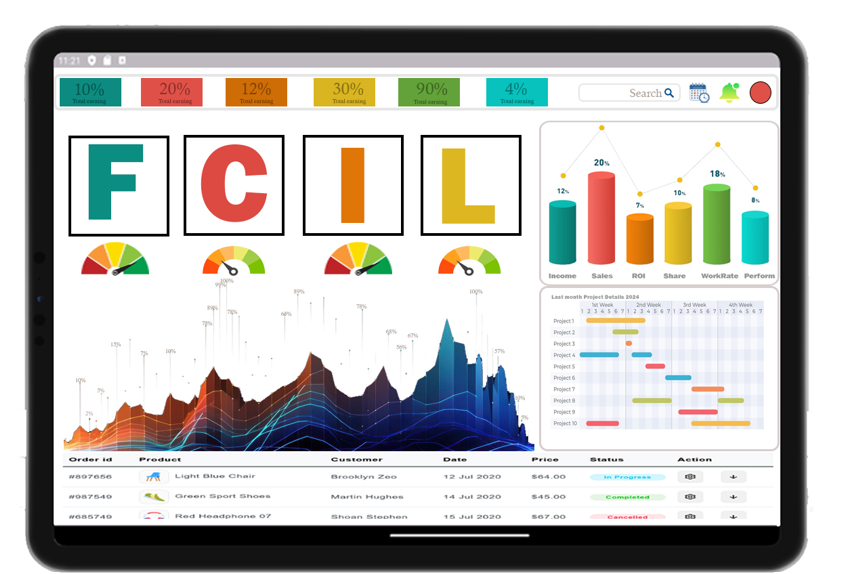In today’s fast-paced business environment, the ability to analyze data in real-time is crucial for maintaining a competitive edge. The Digital Balanced Scorecard Software offers a comprehensive solution for organizations seeking to monitor performance metrics and make data-driven decisions quickly and effectively. By integrating real-time data analysis with the Balanced Scorecard framework, businesses can enhance their strategic execution, improve operational efficiency, and adapt to market changes swiftly.

The Role of Real-Time Data in Strategic Management
The Balanced Scorecard is a strategic management tool that provides a framework for aligning business activities with the organization’s vision and strategy. Traditionally, the BSC focuses on four key perspectives: Financial, Customer, Internal Processes, and Learning & Growth. However, in a dynamic business environment, the traditional BSC’s periodic reporting may not suffice to keep up with rapid changes. This is where real-time data analysis becomes invaluable.
Real-time data analysis enables organizations to monitor key performance indicators (KPIs) as they happen, offering immediate insights into operational performance. This allows decision-makers to identify trends, detect issues, and seize opportunities promptly. When integrated with Digital BSC software, real-time data analysis transforms the scorecard from a static reporting tool into a dynamic management system that supports continuous improvement.
Key Features of Digital Balanced Scorecard Software
Digital Balanced Scorecard Software with real-time data analysis capabilities offers several features that enhance its effectiveness:
- Automated Data Collection and Integration: The software automatically gathers data from various sources, including financial systems, customer relationship management (CRM) tools, and operational databases. This ensures that the scorecard is always up-to-date, reducing the manual effort required to compile reports.
- Interactive Dashboards: Real-time dashboards provide visual representations of KPIs, allowing users to quickly assess performance across different perspectives. These dashboards are customizable, enabling users to focus on the metrics that matter most to their specific roles.
- Alerts and Notifications: The software can be configured to send alerts when KPIs deviate from expected ranges. This proactive approach helps managers address issues before they escalate, ensuring that strategic objectives remain on track.
- Predictive Analytics: By analyzing historical data trends, the software can offer predictive insights that help organizations anticipate future performance. This enables proactive decision-making and better resource allocation.
- Collaboration Tools: Digital Balanced Scorecard Software often includes collaboration features that allow teams to share insights, discuss strategies, and track action items directly within the platform. This fosters a more cohesive approach to strategy execution.
Benefits of Real-Time Data Analysis in BSC
The integration of real-time data analysis with the Digital Balanced Scorecard offers several benefits:
- Improved Decision-Making: With access to up-to-the-minute data, managers can make informed decisions quickly. This agility is crucial in responding to market shifts, operational challenges, and customer demands.
- Enhanced Performance Monitoring: Real-time data provides a clear and continuous view of organizational performance. This enables businesses to monitor progress toward strategic goals more effectively and make adjustments as needed.
- Increased Accountability: When data is available in real-time, accountability within the organization improves. Employees at all levels can see how their actions impact KPIs, fostering a culture of responsibility and continuous improvement.
- Faster Response to Issues: Real-time alerts ensure that potential problems are identified and addressed immediately. This reduces the risk of minor issues escalating into major setbacks.
- Greater Strategic Alignment: By continuously tracking performance metrics, organizations can ensure that their day-to-day activities remain aligned with their long-term strategic objectives. This alignment is key to achieving sustainable growth and success.
Case Study: Implementing Real-Time Data Analysis with Digital Balanced Scorecard Software
Consider a manufacturing company that implemented Digital BSC software with real-time data analysis capabilities. Before the implementation, the company relied on monthly reports to assess performance, which often led to delayed responses to operational issues. After adopting the software, the company was able to monitor production metrics, customer satisfaction scores, and financial performance in real-time.
As a result, the company reduced production downtime by 15%, improved customer satisfaction by 10%, and increased overall profitability by 8% within the first year. The ability to react swiftly to data-driven insights enabled the company to optimize its operations and maintain a competitive edge in the market.
Conclusion
Real-time data analysis is a powerful tool that enhances the effectiveness of the Digital Balanced Scorecard. By providing instant access to critical performance data, it empowers organizations to make faster, more informed decisions, ensuring that strategic objectives are met in a rapidly changing business landscape. As businesses continue to navigate the complexities of the modern market, integrating real-time data analysis with BSC software will be essential for achieving long-term success.